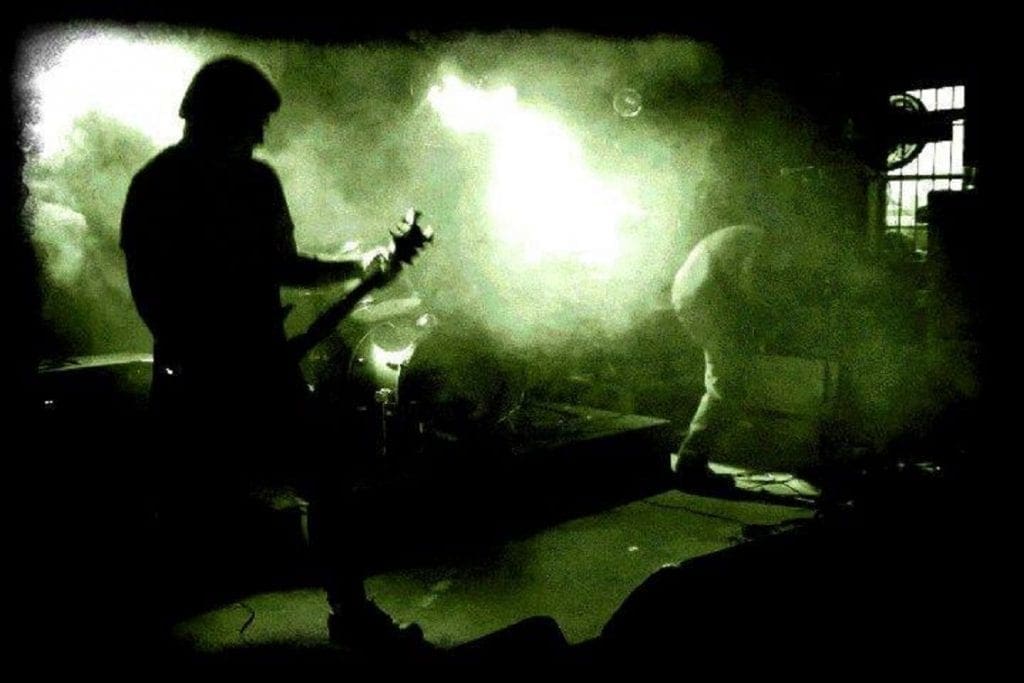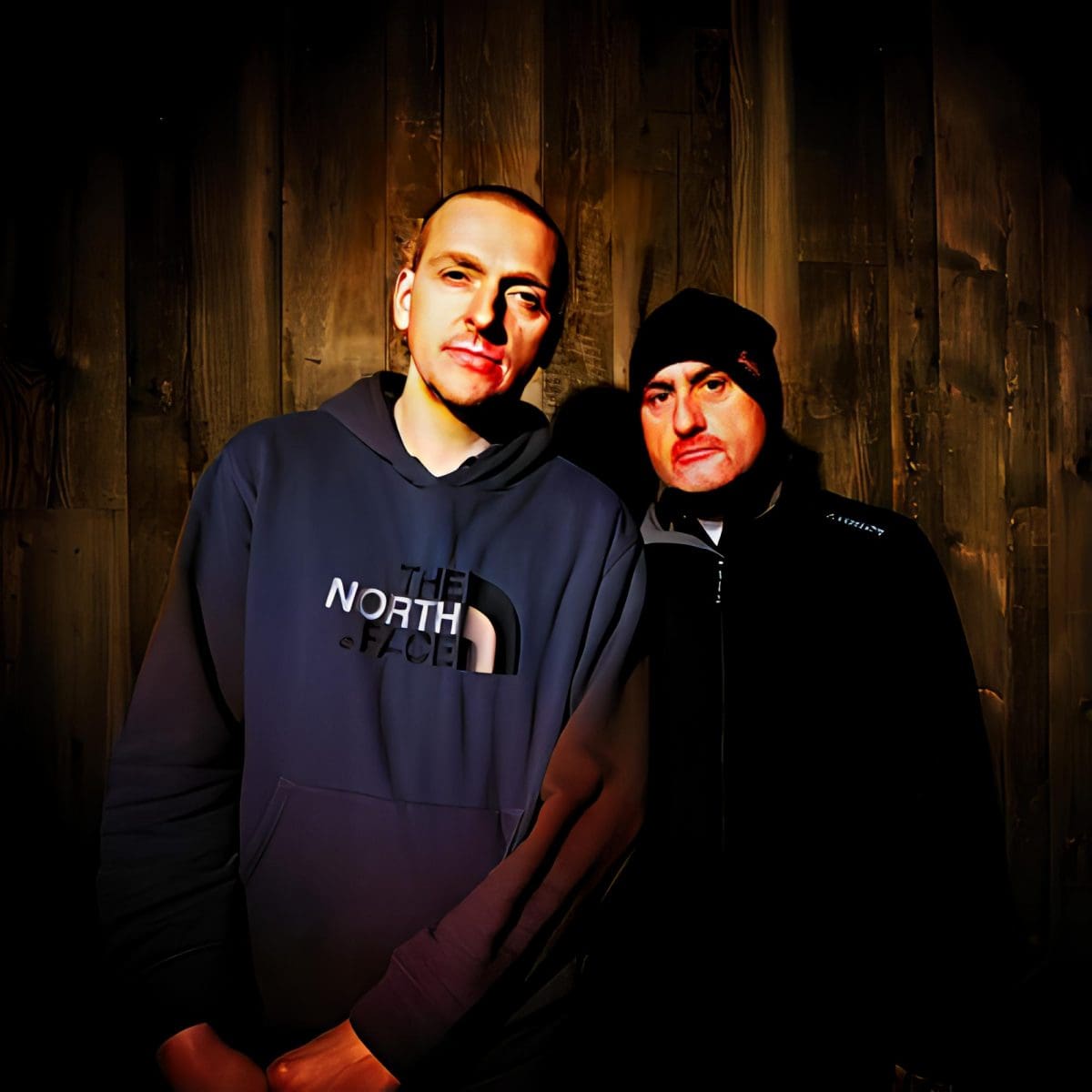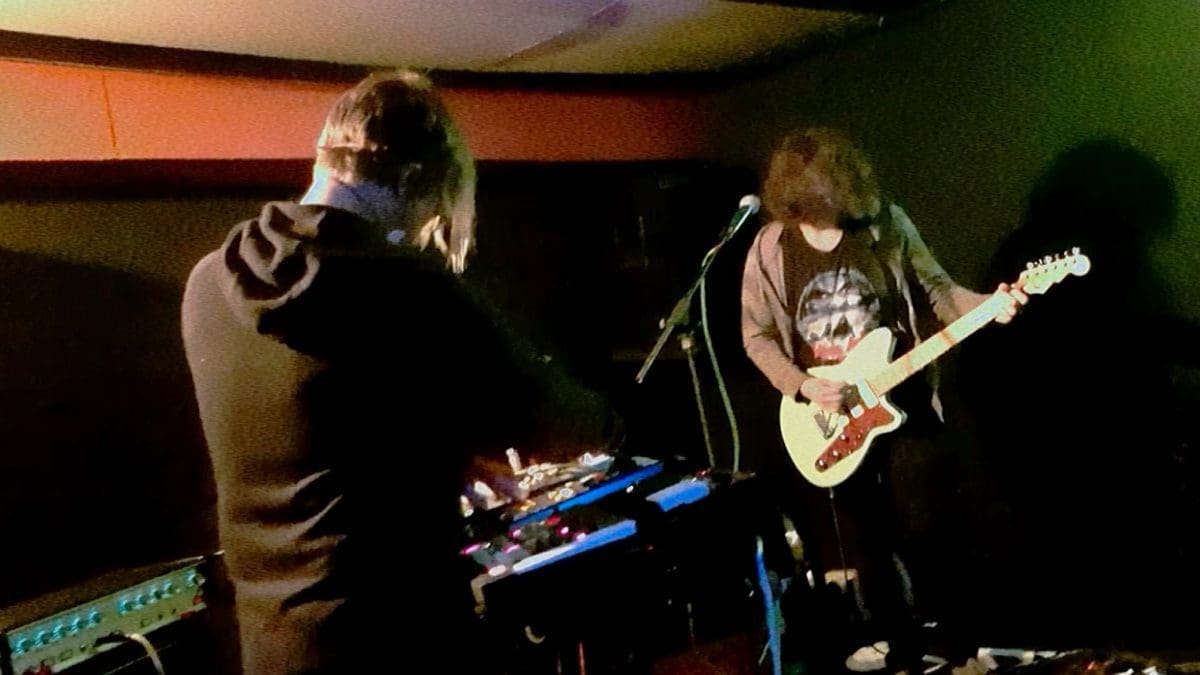‘Click Interview’ with Khost: ‘Khost Is Completely Genre-Free’


Birmingham (UK) duo Andy Swan – Damian Bennett set up Khost in 2013. Damian explains the name of the project had a strange shroud’ feel to it, like a presence. Khost is a city in Afghanistan so in the end it sounds a bit the same as acts like Boston, Chicago, London, Berlin and Nazareth. Damian Bennett felt they all seemed to be autonomous and just generated a vibe more than anything literally city-related. Andy Swan first read about the Afghan city of Khost in a CIA book and it immediately hit him as evocative and exotic and yet slightly threatening in a non-specific sort of way. It has an air of unease about it. It’s really hard to put your finger on it which suits the sound of Khost really well. Khost this year released the album “Buried Steel” on Cold Spring Records, which sounds to me as their most accomplished work to date; an album filled with overwhelming, monstrous sound treatments and carried by a rough production. It’s a work that can’t leave you unaffected so I talked about it with both members.
(Courtesy by Inferno Sound Diaries)
Q: I noticed you’re hailing from Birmingham, which is a town where numerous bands and artists dealing with very diversified music genres have been established. What has been the impact of it all on your interest in music and starting to experiment yourself? And what’s your connection with JK Flesh/Godflesh?
Damian: I grew up loving acts such as Wizzard, The Move and Moody Blues, all of which are entrenched in the spirit of the city. Later bands like Au Pairs and Steel Pulse… if you know the latter, you know of Handsworth where I used to live. We love Birmingham rock, punk, metal, glam, reggae, D&B, house… from clubs to unofficial anarcho-punk. We love venues like The Asylum and I personally love Newtown and Aston. Sabbath would rehearse in the community centre there.
We both have connections to Godflesh over decades and I was really proud to have worked on music in Avalanche studio, and to play like in Techno Animal… Justin on guitar, Kev on sax, was insane. Plus touring with Godflesh in the depths of Winter, was badass.
Andy: I was born and raised in Birmingham. I left school at 16 and immediately went to work in a Birmingham factory which had a massive effect on me. Birmingham back then had a more lived-in sort of feel which it doesn’t seem to have these days -it’s all plastic and shiny which I hate. It used to have a lot more soul but it’s devoid of that in some ways now.
I was in a band called Final with Justin from Godflesh back when I was 15 or so. We go back a long way!
Q: What means Khost to you and what did you originally tried to express/exorcise?
Damian: I love the possibilities the Khost vibe/temp/mindset presents. I don’t of many acts that have done as much wide-ranging material as we have… this year alone, “Buried Steel”-album –plus videos for that, “Steel Veil”-book, “23_12”-compilation which is ongoing and another project with a USA band which is in the works.
We comprise super heavy riffs, tones and electronics –such as “Intravener” –multi visuals on stage, and have many guest artists such as Eugene from Oxbow, Stephen from Wrangler/Cabaret Voltaire, Syan –who has also played with us live –Daniel Buess, Jo Quail.
We also get some pretty hefty swipes in about what passes for modern civilization. Hardcore commentary, just not the same delivery as you would get in punk. Though we obviously love punk and hardcore throughout the decades. I want to say on the latter am a massive Will Haven fan, for their sonics, approach, vibe, lyrics, live… wow.
Andy: I think that Khost is completely genre-free. It allows any sort of expression which is very liberating.
Q: What kind of work did you wanted to accomplish with “Buried Steel” and what have been the different stages you’d to go through to achieve the album?
Damian: Many albums can be a fairly simple journey from A to B. This is not.
Some albums are just a compilation of tracks. This is not. To do the latter would be, for me, to regard a ‘film’ as being a compilation of separate visual segments then just stuck together: if done right, it’s not that at all; it’s a narrative, a continuum under the watchful eyes of a unified team.
We wrote the material immediately starting after “Governance” and it really developed organically over time, with people entering the space and delivering their part. I think the first piece written was “Kent House”.
We had mechanical mishaps on the way such as a reel to reel catching flame –this is an occupational hazard with the band, but would salvage what we could and make something new from the salvaged material: like creating twisted sculptures from burnt wreckage.
Q: You again asked several guest artists to contribute to the album. Tell us a bit more about the input of other artists, which became like a common thread in the different works you’ve released? How does it happen and do you handle some specific criteria to ask other artists?
Damian: For me some of the spoken parts were inspired by interludes and narratives from the past from people such as Gira and Rollins, and loved how spoken interludes worked with the flow of the album, not to mention live… the connection between spoken and sung lyrics was so cool to me. I loved their books too: “Black Coffee Blues” and “The Consumer” for examples.
We would work with the people over time and develop the sound design to work with the material. It develops a lot as you discuss life and ups and downs. One discussion was about insomnia. We have done this since “Buried Steel” too, with people like Syan on “5 Steps Adrift” and Daniela v.k too, check out “Every Single Lie”.
The piece with M. Liebeskind –engineer for Oxbow, Melt Banana, 16-17 -is something from late night phone discussions and is very eerie actually: about two people on a tram talking to each other without moving, like a B&W film, or painting by Magritte, with a feeling of menace. It’s hard to get the same feeling in a musical piece if you follow.
Similarly Stephen from Tunnels Of Āh and his work… but I don’t want to talk too much more as it is down to the movie that plays in the mind of the listener.
I am also inspired by Mary Ocher who works in music in a way that transcends normal ‘songs’. She is awesome live.
Andy: I go back to the early 80’s Birmingham power electronics scene with Stephen from Tunnels Of Āh. He, along with all the other contributors, ‘get’ khost so they know the score immediately.
Q: I’ve always experienced your works as a mix of different influences, but in the end it always reveals a dark, obscure and event tormenting sound! What’s hiding behind this ‘terror sound’ and what inspired and/or drives you to compose this kind of music?
Damian: This connects to the ‘menace’ point, above. If that’s there then there would be the sort of unease that films from a different era presented… as they used old technology like analogue sound, had different acoustics, lighting, film stock, video stock… that could be low budget horror from 70s; “Lets Scare Jessica To Death” for example, it could be certain scenes even in films like “Dirty Harry”, like when he is confronted by the rogue cops in ‘Magnum Force’ in an underground carpark… it could be certain scenes in Polanski films, like “Rosemary’s Baby” when Rosemary realizes that the older couple are not right or normal (pierced ears), or when she’s in the phone booth and someone has his back to her outside… and in his version of “Macbeth” where dawn comes up and the castle is bathed in red light… not to mention scene with Banquo’s ghost! Or it could be overt stuff like “Evil Dead”, Korean/Japanese horror, moments in the early ‘V/H/S’ franchise… or my personal faves, “Paranormal Activity” 1-3. So it’s usually things from unexpected sources.
And the “World At War”-series. The sound/music on that is enough to stop anyone in their tracks.
Andy: Back when I was a kid there was a TV series called “Armchair Thriller” which scared me to death. There was one particular episode that included a faceless nun which was terrifying to me as a young kid. The first movie however that gave me nightmares was “The Wizard Of Oz” which in itself wasn’t a scary film, but had that underlying unease to it which is something that we’re definitely into. Not overtly horrific or scary but disconcerting and uneasy.
Q: Khost definitely is a live project! You already did an impressive number of live performances in very different countries. So I can easily imagine you must have been frustrated –and still are, because of the restrictions due to Covid 19. So what have you been doing during the lockdown? And how do you transpose your sound and work from the studio towards the stage?
Damian: We continue to work on “23_12”, which is inspiring. We did a live to air/stream at beginning of lockdown. We recently did an hour long mix, full of interesting moments. On a personal front have also done a side-project called TRIAL, industrial-thrash-metal.
Andy: We’ve had quite a few shows and festivals cancelled this year which has been a great shame. We have however been able to work on new material some of which will appear on a split EP to be released later this year or early next year.
Khost live is a different beast altogether. We’ve had all sorts of unexplainable occurrences during live shows -lights failing, laptops refusing to boot, sound cutting out, which all adds to the unease.
Damian & Andy: Merci beaucoup!
Since you’re here …
… we have a small favour to ask. More people are reading Side-Line Magazine than ever but advertising revenues across the media are falling fast. Unlike many news organisations, we haven’t put up a paywall – we want to keep our journalism as open as we can - and we refuse to add annoying advertising. So you can see why we need to ask for your help.
Side-Line’s independent journalism takes a lot of time, money and hard work to produce. But we do it because we want to push the artists we like and who are equally fighting to survive.
If everyone who reads our reporting, who likes it, helps fund it, our future would be much more secure. For as little as 5 US$, you can support Side-Line Magazine – and it only takes a minute. Thank you.
The donations are safely powered by Paypal.









